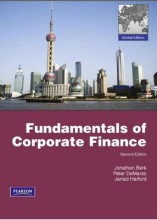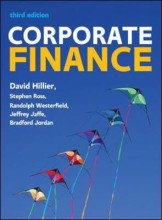Lit 8: Responsible Supply Chain Management
25 important questions on Lit 8: Responsible Supply Chain Management
What is the difference between a linear and circular economy?
What is a responsible supply chain?
What are the 2 types of capital
2. Social capital - personal capital (knowledge, skills, physical health and well-being) and societal capital (culture, peace and shared value)
- Higher grades + faster learning
- Never study anything twice
- 100% sure, 100% understanding
What are the 3 tasks of organisations in a responsible supply chain?
2. Focus on the optimisation of the supply system based on the triple bottom line
3. Work on motivating and inspiring partner organisations throughout the supply chain to focus on creating responsible business practices and value for the relevant stakeholders too
What is a supply chain?
What are the 2 types of supply network systems?
- many interconnected parts
- linear and predictable with standardised responses from suppliers
- changing speed or size of elements lead to proportionate responses
- complicated version of a simple system
2. Complex adaptive systems
- independent but interactive components
- non-standardised response from suppliers
- self-emerging and self-organising of suppliers lead to various outcomes
What are complex adaptive systems?
What is supply chain architecture?
What is an environmental life cycle assessment?
2. Identifies the type of impact (e.g. Water use)
3. Identifies magnitude of impact
Can either be cradle to gate (supplier, transport, manufacturing and packaging) or cradle to grave (supplier, transport, manufacturing, packaging, use and disposal)
What is Jevons paradox?
What is a second-order supply chain?
How can managers work in the 3 domains to create a responsible supply chain?
2. In the responsibility domain, stakeholder value should be the focus in all components of the supply chain
3. In the ethical domain, managers should explore decision alternatives that are without any ethical misconducts
What are the main sustainability-related economic subsystems?
2. Sustainability clusters
3. Sustainable value chains
4. Sustainable industry
5. Sustainable community
In what 4 ways can SMEs approach responsible business and supply chain management processes?
2. Try to make responsible business conduct relevant to employees to overcome employee resistance and combat resource scarcity
3. Garner internal understanding on responsible business, and turn this understanding into business values and principles
4. Appoint a responsible business champion who focuses on spearheading the first responsible business activities
What is the Six T's framework?
1. Traceability - how capable is a company in tracking the impact a product makes along the supply chain
2. Transparency - the degree of accessibility of information
3. Testability - how well can product attributes be tested
4. Time - the degree to which production processes fit an established schedule
5. Trust - the degree of trust that stakeholders will honour commitments
6. Training - the development and training of knowledge and skills pertaining to quality and safety
What are the 3 strategic postures (Wu and Pagell) to provide a framework for firm's decision-making processes?
2. Equal footing posture - firms attempt to optimise the triple bottom line, and provide certain benefits and stability to their employees and the communities in which they are situated
3. Opportunity first posture - firms engage in either environmental or social sustainable practices to achieve economic goals through providing a differentiation factor with regards to other companies
What is a focal company?
What are the 2 overarching types of organisations in responsible supply chains?
2. Responsible supply chain followers - follow and react to the actions of the responsible supply chain leaders
What are Iwundu's 5 rules to successfully manage a responsible supply chain?
2. Extend responsible business programs to encompass the supply chain in its entirety
3. Extend the organisation's sphere of engagement
4. Establish a sourcing program that is responsible
5. Establish a chain that is both transparent and traceable
Why would a company want standards and certifications?
2. Gives of good signals in B2B and B2C
3. Establishes legitimacy
4. Can help in winning certain contracts
5. Raises market entry barriers
6. Raises norms for supply chain
7. Helps in the improvement and solving of specific issues
In what ways can firms reduce the negative impacts of logistics?
2. Eco-efficient logistics
3. Reverse logistics
4. E-commerce (retailing) logistics
5. Servicisation logistics for product complementation or substitution by services (e.g. Repair instead of replace, rent instead of own)
6. Local production and consumption networks
What are the 2 main strategies to slow the resource loop?
2. Functionality instead of ownership - renting instead of owning
What are business associations?
What is functional redundancy?
What are the 5 stages in the waste hierarchy model?
2. Reduce
3. Reuse
4. Recycle
5. Dispose
The question on the page originate from the summary of the following study material:
- A unique study and practice tool
- Never study anything twice again
- Get the grades you hope for
- 100% sure, 100% understanding






























